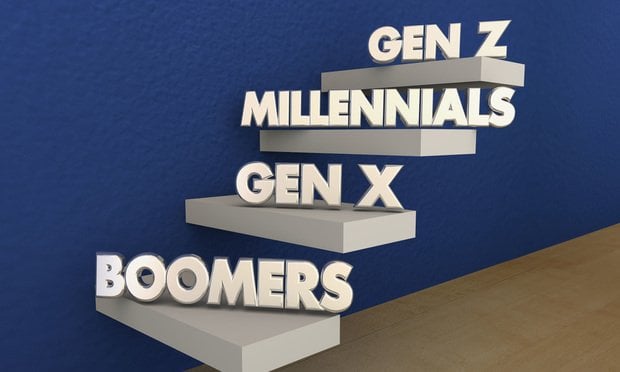Whether on the verge of retirement or launching a career, workers needto save more for retirement—but there are obstacles in their wayeven if they participate in retirement plans at work.
|Although 65 percent of workers are participating in a workplaceretirement plan, that's still not covering everyone. And there aresome bumps along the way even for active participants.
|Among the challenges older workers who have switched jobs anumber of times face is the challenge of creating a retirementincome stream out of scattered plans that haven't been rolled overinto a single account.
|Millennials, for their part, are saving more than earliergenerations, but not as many of them are doing so—while 30 percentof millennials are putting money into a retirement account, 47percent of boomers are saving.
|And regardless of generation, whether the investments theychoose (or are offered) are the right ones to help them grow theirnest egg, they may lack enough investment savvy to navigate theselections offered to achieve the maximum benefit.
|Millennials are more into diversification than othergenerations, with 83 percent choosing diversified retirementinvestment options compared with 78 percent of boomers. And ofthose who have diversified, 63 percent of millennials have 100percent of their funds in a diversified investment solution,compared with just 45 percent of boomers.
|However, according to the 2019 Driving Plan Health report from Principal,there are a number of things employers can do to help them out viaplan design and other measures:
|9. Automatic enrollment with a reenrollment or automaticsweep feature. According to the report, 77 percent ofemployees are either positive or neutral about reenrollment ofpeople who previously opted out of participating in the past.Adding this to a plan can increase the number of employees who willthen end up saving (or saving more) for retirement.
|8. Higher, and escalating, default deferralrates. Since people often surrender to inertia and leavedefault settings alone, default deferral rates of 6 percent ormore, rising to 10 percent over time, can leave workers in a muchbetter position financially at retirement than if they simplyaccepted a standard 3 percent deferral rate that doesn't changewithout intervention. The report adds that catch-up contributionscan be vital for bolstering retirement savings as well, but theyprimarily benefit higher-income workers.
|7. Diversified choices. Target-date funds andoptions such as an investment refresh, which will automaticallychannel participants into a TDF unless they opt out, can helpemployees who might otherwise just leave their choices alonewhether they're age- or budget-appropriate. In addition, selectionssuch as annuities for those about to enter retirement gives them anoption that could serve them better than simply withdrawing, andthen trying to manage, a lump sum.
|6. Optimizing the employer match. Employermatches can be structured so that the formula steers employeecontributions higher—to 8–10 percent. Says the report, "Anabove-average match or generous match formula encouragesparticipation, especially among preretirees."
|5. Online tools and resources. Particularlyamong younger employees, the ability to make choices, do researchand calculate projected retirement needs can spur them to action ina plan that might otherwise see no changes year after year.
|4. Distribution options. Adding distributionoptions—including ways to budget—can help employees once they enterretirement, so that they can create an income stream to better seethem through their post-working years.
|3. Investment management in retirement. Helpingemployees to learn more about, and manage, their investment choicesonce they have retired can help them to become better at choosingselections that will help their retirement income grow and gofurther.
|2. Strategies for using Social Security andMedicare. A retirement plan designed to help employeesmanage more than just the savings they put away at a singleemployer can offer them a retirement that's financiallyhealthier.
|1. Consolidating retirement savings from a career thatspans multiple employers. Employees might not be ableto—or even be able to figure out whether they can—consolidate themoney from multiple retirement accounts so that it can be turnedinto a single income stream. But a plan that provides this sort ofassistance can help them better understand their retirement needs,as well as more efficiently budget their available funds.
|READ MORE:
Complete your profile to continue reading and get FREE access to BenefitsPRO, part of your ALM digital membership.
Your access to unlimited BenefitsPRO content isn’t changing.
Once you are an ALM digital member, you’ll receive:
- Critical BenefitsPRO information including cutting edge post-reform success strategies, access to educational webcasts and videos, resources from industry leaders, and informative Newsletters.
- Exclusive discounts on ALM, BenefitsPRO magazine and BenefitsPRO.com events
- Access to other award-winning ALM websites including ThinkAdvisor.com and Law.com
Already have an account? Sign In
© 2024 ALM Global, LLC, All Rights Reserved. Request academic re-use from www.copyright.com. All other uses, submit a request to [email protected]. For more information visit Asset & Logo Licensing.









